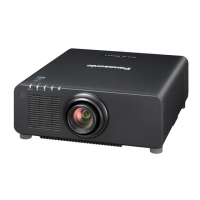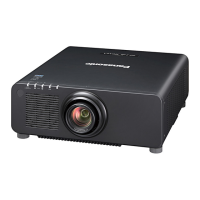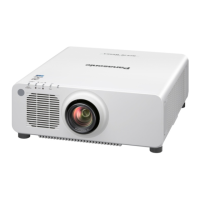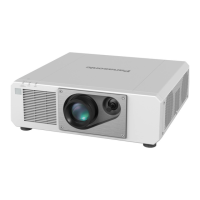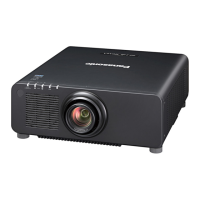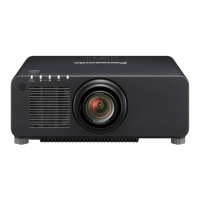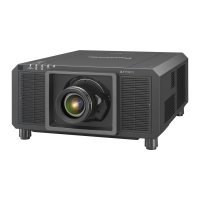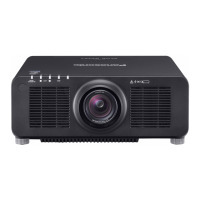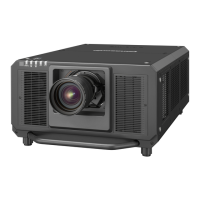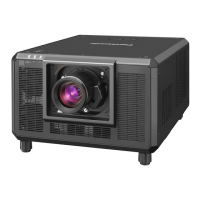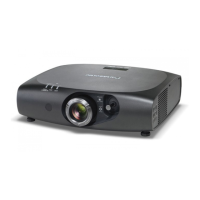Chapter 2 Getting Started — Connecting
50 - ENGLISH
Connecting
Before connecting
f
Before connecting, carefully read the operating instructions for the external device to be connected.
f
Turn off the power of all devices before connecting cables.
f
Take note of the following points before connecting the cables. Failure to do so may result in malfunctions.
g
When connecting a cable to a device connected to the projector or the projector itself, touch any nearby
metallic objects to eliminate static electricity from your body before performing work.
g
Do not use unnecessarily long cables to connect a device to the projector or to the projector body. The longer
the cable, the more susceptible to noise it becomes. Since using a cable while it is wound makes it act like an
antenna, it is more susceptible to noise.
g
When connecting cables, connect GND rst, then insert the connecting terminal of the connecting device in a
straight manner.
f
Acquire any connection cable necessary to connect the external device to the system that is neither supplied
with the device nor available as an option.
f
If synchronization signals output from computers or video equipment are disrupted due to changes in the video
output setting or other reasons, colors of projected images may be temporarily disrupted.
f
The projector accepts YC
B
C
R
/YP
B
P
R
signals, analog RGB signals (synchronization signals are TTL level), and
digital signals.
f
Some computer models or graphic cards are not compatible with the projector.
f
Connect using an extension device, etc., when installing the projector away from the video equipment. The
projector may not display the image properly when it is connected directly using a long cable.
f
For details of the types of video signals that can be used with the projector, refer to “List of compatible signals”
(
x
page 225).
Connecting example: AV equipment
For <HDMI IN>/<DVI-D IN> terminals
Blu-ray disc playerDVD player with HDMI terminal (HDCP)
Note
f
Switching of the setting in the [DISPLAY OPTION] menu
→
[DVI-D IN]
→
[EDID SELECT] may be required depending on the connected
external device when DVI-D signal is input.
f
Switching of the setting in the [DISPLAY OPTION] menu
→
[HDMI IN]
→
[EDID SELECT] may be required depending on the connected
external device when HDMI signal is input.
f
The <DVI-D IN> terminal can be connected with the HDMI and DVI-D compatible devices. However, some external devices may not be able
to project images properly, such as the image not displaying.
f
For the HDMI cable, use an HDMI High Speed cable that conforms to the HDMI standards. However, when the following 4K video signal
exceeding the supported transmission speed of the HDMI High Speed cable is to be input, use the HDMI cable supporting the high speed
transmission of 18 Gbps such as the one with Premium HDMI cable authentication.
g
A video signal with high specication color depth and gradation such as 3840 x 2160/60p 4:2:2/36-bit or 3840 x 2160/60p 4:4:4/24-bit
Images may be disrupted or may not be projected when a video signal exceeding the supported transmission speed of the HDMI cable is
input.
f
The <HDMI IN> terminal of the projector can be connected to an external device equipped with a DVI-D terminal using an HDMI/DVI
conversion cable. However, this may not function properly for some external devices, and images may not be projected.
f
This projector does not support the VIERA Link (HDMI) and HDMI CEC (Consumer Electronics Control).

